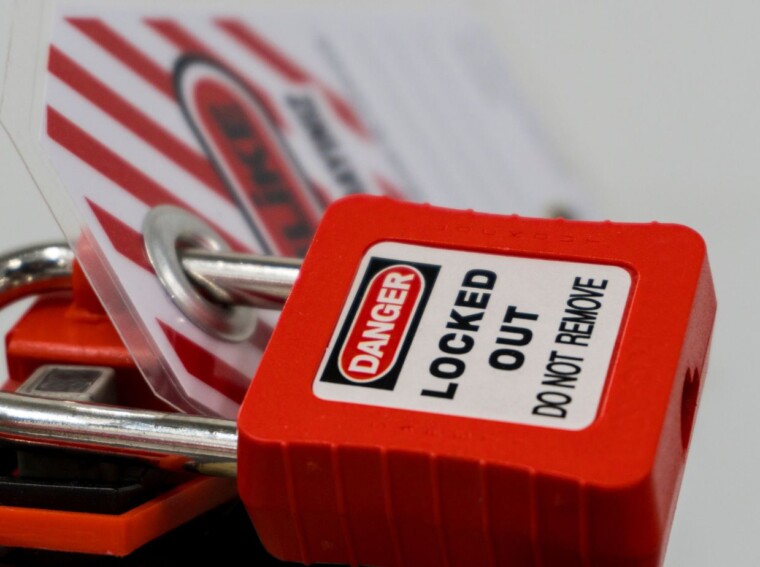How to Take off Security Tag
I’ve been there, too – you’re excited about your new purchase, you get home and realize the security tag is still attached. It can be a real downer and quite the inconvenience. But don’t fret! I’m here to guide you in learning how to take off that pesky security tag without damaging your brand-new item.
Security tags are designed to deter theft, but sometimes they end up going home with us by mistake. The good news? There’s no need for an emergency trip back to the store when this happens. With a little bit of patience and care, removing a security tag can be accomplished at home.
Surely, before we dive into it, I must stress that these methods should only be used for legally purchased items – respecting retail establishments’ rights is essential; we wouldn’t want anyone using this information dishonestly now, would we? So let’s navigate through this together and ensure our shopping remains hassle-free!
Understanding the Basic Functionality of Security Tags
Let’s kick things off by understanding what security tags are and how they work. You’ve likely come across them while shopping – those little devices attached to clothing or other merchandise that set off an alarm if you try to leave the store without paying. But have you ever stopped to think about how these security tags function?
Firstly, it’s important to note that there are several types of security tags used by retailers. Some common ones include magnetic tags, acousto-magnetic (AM) tags, radio-frequency (RF) tags, and ink-dye tags.
- Magnetic Tags: These work with a magnet-based mechanism locked in place. When not properly deactivated at checkout, they’ll cause an alarm to blare when passing through the store’s electronic gates.
- Acousto-Magnetic (AM) Tags: AM technology involves using a transmitter to create a surveillance area where tag signals can be detected. If an active AM tag passes through this field, it triggers the alarm.
- Radio-Frequency (RF) Tags: RF utilizes low-frequency radio waves between the tag and receiver antenna. Similar to AM tags, non-deactivated RF tags will trigger an alarm when exiting the store.
- Ink-Dye Tags: These don’t set off alarms but act as a deterrent by releasing permanent ink if forcibly removed.
Now that we’re familiar with some common types of security devices let’s delve into their basic functionality. Most security systems have two primary components: the security tag and an antenna system installed at store exits.
The antenna system emits a constant signal within its range – imagine this as invisible lines around your shop exit doors. When a non-deactivated or improperly deactivated tag is taken through this area, it disrupts this signal causing an alert or alarm sound.
In essence, each time you’re wondering “how to take off a security tag” or “how to remove a security tag”, you’re dealing with a system designed to prevent theft and unauthorized removal of merchandise. It’s an ingenious, albeit sometimes annoying, technology that helps businesses protect their assets.

Types of Security Tags and How They’re Attached
I’m sure you’ve seen them – those pesky little devices attached to merchandise in stores, known as security tags. If you’ve ever wondered how to take off a security tag or even just remove a security tag, it’s crucial to understand the different types out there and how they’re attached.
First up, we have what’s called ‘Hard Tags’. These are probably the most common type of security tag you’ll encounter. They’re typically made of plastic and contain a metal pin that pierces through the item’s fabric. Hard tags are often used on clothing, sporting goods, and other high-value items.
Next on our list is ‘Ink Tags’. Unlike hard tags, ink tags do not connect to an alarm system but instead rely on the threat of staining the product (and potentially your hands or clothes) if tampered with improperly. If someone tries to force these open without using the correct method, they’d be hit with a burst of permanent dye.
We also have ‘Bottle Locks’, designed specifically for liquor bottles. These unique tags prevent potential thieves from opening the bottle until it’s been paid for and properly unlocked by store personnel.
Another type is ‘Spider Wraps’. As their name suggests, these wrap around larger boxed items such as electronics or appliances like a spider wrapping its prey in silk. The wraps tighten when tampered with and can trigger an alarm if taken past sensors at store exits.
Finally, we have ‘Electronic Article Surveillance (EAS) Labels’. These small stickers blend seamlessly into packaging designs making them quite stealthy indeed! Don’t let their size fool you though; these labels pack quite a punch when it comes to preventing theft!
Each type has its own specific way of being attached. Hard Tags use metal pins that go through item fabrics while Ink Tags employ clamps that hold onto products tightly. Bottle Locks snap onto the tops of bottles, Spider Wraps encompass items, and EAS Labels are simply stuck onto the item or packaging.
Knowing how to remove these security tags safely and correctly is key to preventing damage to your newly purchased items. But remember, always ensure that store personnel have removed them at checkout. If you find one still attached when you get home, it’s best to return to the store for proper removal.

